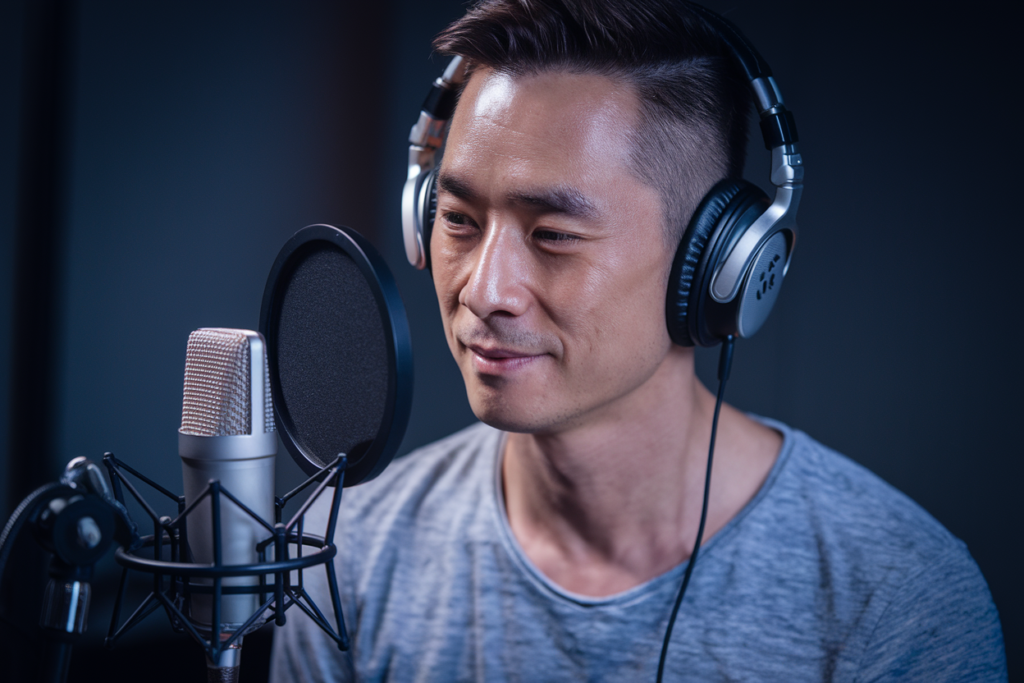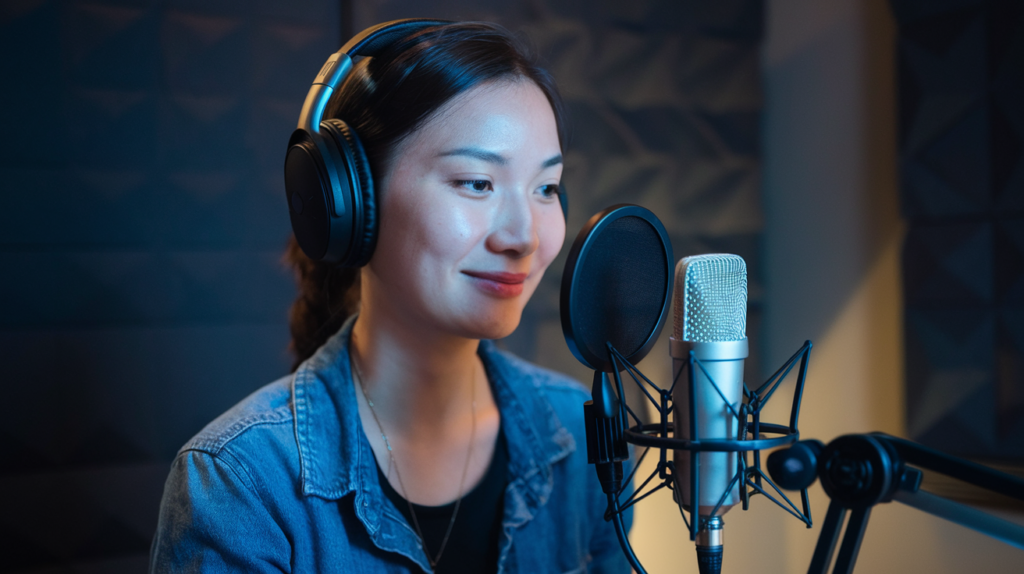Key Takeaways
- Understanding Subtitles and Dubbing: Simplified Chinese is mainly used in mainland China for its readability, while traditional Chinese is prevalent in Taiwan and Hong Kong, reflecting cultural nuances.
- Characteristics of Simplified Chinese: This writing system features fewer strokes per character, promoting accessibility and quicker reading, especially beneficial for younger audiences.
- Cultural Significance of Traditional Chinese: Traditional characters preserve historical depth and aesthetic beauty, enhancing storytelling through nuanced expression in voice acting.
- Accuracy and Context: Simplified subtitles are suitable for fast-paced content due to their clarity, whereas traditional subtitles provide richer context essential for culturally rich narratives.
- Audience Reception Differences: Familiarity with either writing system affects viewer preferences; simplified appeals to mainland audiences while traditional resonates more with viewers from Taiwan or Hong Kong.
- Pros and Cons Consideration: Each approach has unique benefits—simplified offers modern appeal and accessibility, while traditional provides cultural significance but may pose reading challenges.
Ever wondered why some movies and shows use simplified Chinese subtitles while others stick to traditional? It’s a question that sparks debate among fans and linguists alike. Understanding the differences between these two writing systems can enhance your viewing experience and help you appreciate the nuances of Chinese media.
Overview of Chinese Subtitles and Dubbing
Chinese subtitles and dubbing play a crucial role in making media accessible to diverse audiences. Simplified Chinese, primarily used in mainland China, features fewer strokes per character. This system simplifies reading for many viewers. Traditional Chinese, on the other hand, is prevalent in Taiwan and Hong Kong. It maintains more intricate characters that reflect historical roots.
Subtitling offers a straightforward way to present dialogue while preserving the original audio’s emotional tone. Voiceover adds another layer by replacing or overlaying audio with translated content. For those unfamiliar with the languages, simplified subtitles might be easier to read quickly during fast-paced scenes. Conversely, traditional subtitles can carry cultural nuances that resonate deeply with native speakers.
Dubbing involves voice actors who recreate original performances in another language. These voice artists must convey emotions accurately while matching lip movements and timing. The choice between using subtitles or dubbing often depends on personal preference and viewing context.
Understanding these differences enhances your appreciation of films and shows from the Chinese-speaking world. Whether you’re watching for entertainment or educational purposes, recognizing how each method affects storytelling can enrich your viewing experience significantly.
Understanding Simplified Chinese
Simplified Chinese plays a vital role in today’s media landscape. Primarily used in mainland China, it features characters that contain fewer strokes, making them easier to read and write compared to traditional characters.
Characteristics of Simplified Chinese
Simplified Chinese emerged in the mid-20th century as part of efforts to increase literacy rates. The key characteristics include:
- Fewer Strokes: Characters often have one or two fewer strokes than their traditional counterparts.
- Standardization: A push for uniformity led to the standardization of many characters.
- Clarity: Simplicity enhances readability, especially for younger audiences or those learning the language.
These traits contribute not only to ease of understanding but also facilitate quicker communication among diverse groups.
Usage in Media and Entertainment
In media and entertainment, simplified Chinese subtitles are prevalent due to their accessibility. They cater primarily to audiences within mainland China but also reach international viewers interested in Chinese content. Key aspects include:
- Subtitles: Simplified characters appear frequently in films and shows aimed at younger generations who may find traditional scripts challenging.
- Cultural Impact: This writing system reflects modern trends while still honoring historical elements found in traditional texts.
- Voiceover Adaptation: When dubbing takes place, voice artists might need simplified scripts to align better with audience expectations, enhancing overall engagement with the material.
Understanding these nuances helps you appreciate how simplified Chinese shapes storytelling across various platforms.
Understanding Traditional Chinese
Traditional Chinese plays a crucial role in the landscape of Chinese media, offering rich cultural and historical significance. This writing system preserves intricate characters that reflect centuries of evolution in language and art.
Characteristics of Traditional Chinese
Traditional Chinese consists of complex characters, often featuring more strokes than their simplified counterparts. These characters embody aesthetic beauty and depth, making them not just a means of communication but also an art form. For example, the character for “dragon” (龍) is visually striking and historically significant, representing power and auspiciousness in Chinese culture. The complexity can sometimes pose challenges for readers unfamiliar with the nuances, yet this complexity enhances the richness of storytelling.
Usage in Media and Entertainment
In media and entertainment, traditional Chinese subtitles are prevalent in films and shows produced in Taiwan, Hong Kong, or by overseas filmmakers aiming to reach audiences familiar with this script. Viewers often appreciate how traditional subtitles capture the essence of dialogue while respecting cultural context. For voiceover projects targeting these regions or demographics, using traditional scripts ensures authenticity.
Voice actors working on projects that feature traditional Chinese must possess a deep understanding of both the language’s subtleties and its emotional resonance. This expertise allows them to convey nuanced performances that align perfectly with visual content. As you explore options for voiceovers in your projects, consider how integrating traditional characters into your scripts can enhance audience connection through authenticity and cultural relevance.
Simplified vs Traditional Chinese Subtitles and Dubbing
Understanding the differences between simplified and traditional Chinese subtitles and dubbing enhances your viewing experience with Chinese media. Each writing system carries unique characteristics that influence accessibility, emotional resonance, and cultural depth in storytelling.
Accuracy and Context
Accuracy matters when it comes to subtitles and dubbing. Simplified Chinese emphasizes clarity with fewer strokes per character, allowing for quicker reading without losing meaning. This approach suits fast-paced films or shows where viewers quickly absorb dialogue. Conversely, traditional Chinese maintains more complex characters that can capture nuances often lost in simplification. In traditional contexts like historical dramas or culturally rich narratives, accuracy relies heavily on these intricate characters to convey deeper meanings.
When voice actors perform in either system, they adapt their delivery based on the script’s language structure. A well-matched voice talent can elevate a performance by aligning emotional tones with the subtleties of either writing style. The context surrounding each scene influences how effectively voiceovers resonate with audiences.
Audience Reception
Audience reception varies significantly between simplified and traditional subtitles and dubbing. Fans from mainland China commonly favor simplified scripts due to their familiarity, while those from Taiwan or Hong Kong appreciate the richness of traditional characters. Knowing your target audience helps determine which style best suits your project.
Moreover, voiceover choices play a crucial role in how audiences connect emotionally with content. Viewers often respond better to familiar accents or styles within their preferred writing systems; thus, utilizing experienced voice artists who understand cultural nuances can enhance viewer engagement.
Both simplified and traditional approaches serve distinct purposes in media accessibility while fostering connections through authenticity. Understanding these aspects empowers you to make informed choices for an impactful viewing experience.
Pros and Cons of Each Approach
Understanding the pros and cons of simplified and traditional Chinese subtitles can enhance your viewing experience significantly. Each approach carries unique benefits and drawbacks that cater to different preferences.
Simplified Chinese
Pros:
- Readability: Simplified Chinese features fewer strokes per character, making it easier to read quickly. This is especially beneficial for fast-paced films or shows.
- Accessibility: It appeals to younger audiences who may be more accustomed to this writing system due to its prevalence in mainland China.
- Modern Appeal: Many contemporary media productions opt for simplified characters, aligning with modern trends while maintaining clarity.
Cons:
- Cultural Depth: Viewers might miss out on the rich historical context embedded in traditional characters. Those familiar with traditional script often find simplified versions lacking nuance.
- Emotional Nuance: While simplified subtitles maintain basic meaning, they sometimes fall short in conveying deeper emotional tones present in traditional scripts.
Traditional Chinese
Pros:
- Cultural Significance: Traditional Chinese characters embody a richer cultural heritage, enhancing storytelling by preserving historical aesthetics and depth.
- Nuanced Expression: Voice actors using traditional scripts can tap into subtleties that resonate more profoundly with audiences familiar with this style.
Cons:
- Complexity: The intricate nature of traditional characters might pose reading challenges for some viewers, especially during rapid dialogue exchanges.
- Limited Audience Reach: Productions primarily utilizing traditional subtitles may not engage younger viewers raised on simplified texts, potentially narrowing their audience base.
When choosing between these approaches, consider your personal preferences and viewing habits. Both systems serve distinct purposes within media accessibility but cater differently based on cultural appreciation and readability needs.
Conclusion
Choosing between simplified and traditional Chinese subtitles or dubbing ultimately depends on your personal preference and viewing context. Simplified Chinese offers clarity and accessibility, making it ideal for fast-paced content, while traditional Chinese enriches the narrative with cultural depth and historical significance.
Understanding these differences can enhance your appreciation of Chinese media significantly. Whether you lean towards the modern ease of simplified characters or the intricate beauty of traditional ones, both systems play vital roles in delivering compelling stories that resonate with diverse audiences. Embrace what speaks to you as you explore the vibrant world of Chinese films and shows.
Frequently Asked Questions
What is the difference between simplified and traditional Chinese subtitles?
Simplified Chinese features fewer strokes per character, making it easier to read and primarily used in mainland China. Traditional Chinese, with more intricate characters, is prevalent in Taiwan and Hong Kong, reflecting historical roots. Understanding these differences can enhance viewers’ appreciation of Chinese media.
Why are subtitles important in movies and shows?
Subtitles help preserve the original audio’s emotional tone while making content accessible to diverse audiences. They allow non-native speakers to enjoy films and shows without losing context or meaning, enriching their viewing experience.
What are the advantages of using simplified Chinese subtitles?
Simplified Chinese subtitles are praised for their readability and accessibility, especially for younger audiences. They feature standardization that facilitates quicker reading, which is ideal for fast-paced content like action films or modern shows.
How does traditional Chinese benefit storytelling?
Traditional Chinese offers cultural depth and aesthetic beauty through its intricate characters. This writing system enhances storytelling by preserving nuances essential for conveying emotions and context in historically rich narratives.
Which audience prefers simplified versus traditional subtitles?
Mainland Chinese viewers typically favor simplified scripts due to their readability. In contrast, audiences from Taiwan or Hong Kong appreciate traditional characters for their cultural significance and connection to heritage.
Can dubbing affect how a story is perceived?
Yes! Dubbing involves voice actors recreating performances in another language, which can influence how a story resonates with viewers. The choice of voice talent affects emotional connections, making it crucial for maintaining authenticity across cultures.
What challenges do simplified scripts face in terms of cultural expression?
While simplified scripts improve accessibility, they may lack the cultural depth found in traditional characters. Some critics argue that this can lead to a less nuanced understanding of culturally rich narratives present in certain films or shows.
How do subtitling choices impact viewer engagement?
The choice between subtitles and dubbing often depends on personal preference and viewing context. Understanding these methods helps viewers connect better with the story being presented, enhancing overall enjoyment of the media experience.







